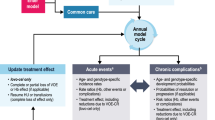Abstract
In HLA haploidentical stem cell transplantation, patients and donors usually share one HLA haplotype and have one different HLA haplotype (hetero-to-hetero). However, there are rare cases of transplantation from HLA homozygous donors to heterozygous recipients (homo-to-hetero), resulting in mismatches only in the graft-versus-host direction. We previously reported that homo-to-hetero transplants have a lower survival rate in a mouse model than hetero-to-hetero transplants due to stronger graft-versus-host disease (GVHD) but inferior graft-versus-leukemia effect. To examine whether homo-to-hetero transplant effects also occur in humans, we retrospectively compared the results of 59 homo-to-hetero and 4,539 hetero-to-hetero cases in the Japanese transplant registry data. The results showed no statistical difference between the homo-to-hetero and hetero-to-hetero groups in the cumulative incidences of neutrophil engraftment (83.1% vs 89.0%), acute GVHD II–IV (36.8% vs 38.8%), III–IV (16.8% vs 17.4%), chronic GVHD (32.7% vs 30.7%), relapse (52.9% vs 49.0%), and non-relapse mortality (31.6% vs 28.2%). In contrast, overall survival was significantly lower in the homo-to-hetero group than in the hetero-to-hetero group (12.6% vs 26.2%, p = 0.0308). The inferior effect of homo-to-hetero transplantation on overall survival remained significant in multivariate analyses.




Similar content being viewed by others
Data availability
The original data and protocols can be obtained upon reasonable request.
References
Ikeda N, Kojima H, Nishikawa M, Hayashi K, Futagami T, Tsujino T, et al. Determination of HLA-A, -C, -B, -DRB1 allele and haplotype frequency in Japanese population based on family study. Tissue Antigens. 2015;85(4):252–9.
Anasetti C, Amos D, Beatty PG, Appelbaum FR, Bensinger W, Buckner CD, et al. Effect of HLA compatibility on engraftment of bone marrow transplants in patients with leukemia or lymphoma. N Engl J Med. 1989;320(4):197–204.
Ikegame K, Kaida K, Yoshihara S, Fujiwara M, Taniguchi K, Kato R, et al. Feasibility of unmanipulated haploidentical stem cell transplantation using standard GVHD prophylaxis for HLA-homozygous patients. Int J Hematol. 2012;96(1):101–8.
Kanda J, Ikegame K, Fuji S, Kurokawa M, Kanamori H, Fukuda T, et al. Haploidentical and matched sibling donor hematopoietic cell transplantation for patients with HLA-homozygous haplotypes. Biol Blood Marrow Transplant J Am Soc Blood Marrow Transplant. 2016;22(11):2031–7.
Satake A, Inoue T, Kubo S, Taniguchi Y, Imado T, Fujioka T, et al. Separation of antileukemic effects from graft-versus-host disease in MHC-haploidentical murine bone marrow transplantation: participation of host immune cells. Int J Hematol. 2010;91(3):485–97.
Atsuta Y, Suzuki R, Yoshimi A, Gondo H, Tanaka J, Hiraoka A, et al. Unification of hematopoietic stem cell transplantation registries in Japan and establishment of the TRUMP System. Int J Hematol. 2007;86(3):269–74.
Przepiorka D, Weisdorf D, Martin P, Klingemann HG, Beatty P, Hows J, et al. 1994 consensus conference on acute GVHD grading. Bone Marrow Transplant. 1995;15(6):825–8.
Sullivan KM, Agura E, Anasetti C, Appelbaum F, Badger C, Bearman S, et al. Chronic graft-versus-host disease and other late complications of bone marrow transplantation. Semin Hematol. 1991;28(3):250–9.
Kanda Y. Investigation of the freely available easy-to-use software “EZR” for medical statistics. Bone Marrow Transplant. 2013;48(3):452–8.
Clancy J, Hyvärinen K, Ritari J, Wahlfors T, Partanen J, Koskela S. Blood donor biobank and HLA imputation as a resource for HLA homozygous cells for therapeutic and research use. Stem Cell Res Ther. 2022;13(1):502.
Shin S, Song EY, Kwon YW, Oh S, Park H, Kim NH, et al. Usefulness of the hematopoietic stem cell donor pool as a source of HLA-homozygous induced pluripotent stem cells for haplobanking: combined analysis of the cord blood inventory and bone marrow donor registry. Biol Blood Marrow Transplant J Am Soc Blood Marrow Transplant. 2020;26(8):e202–8.
Morishima Y, Azuma F, Kashiwase K, Matsumoto K, Orihara T, Yabe H, et al. Risk of HLA homozygous cord blood transplantation: implications for induced pluripotent stem cell banking and transplantation. Stem Cells Transl Med. 2018;7(2):173–9.
Ikegame K, Yoshida T, Yoshihara S, Daimon T, Shimizu H, Maeda Y, et al. Unmanipulated haploidentical reduced-intensity stem cell transplantation using fludarabine, busulfan, low-dose antithymocyte globulin, and steroids for patients in non-complete remission or at high risk of relapse: a prospective multicenter phase I/II study in Japan. Biol Blood Marrow Transplant J Am Soc Blood Marrow Transplant. 2015;21(8):1495–505.
Kaida K, Ikegame K, Inoue T, Maruyama S, Ishii S, Uchida N, et al. Peritransplantation glucocorticoid haploidentical stem cell transplantation is a promising strategy for AML patients with high leukemic burden: comparison with transplantations using other donor types. Transplant Cell Ther. 2023;29(4):273.e1-273.e9.
Acknowledgements
We also thank all physicians, nurses, pharmacists, physical therapists, and support personnel for their care of the patients in this study.
Funding
This work was supported in part by Health and Labour Sciences Research Grants for Clinical Cancer Research from the Ministry of Health, Labour and Welfare, Japan, Grants-in aid for Scientific Research (21K08408).
Author information
Authors and Affiliations
Consortia
Contributions
KI designed the study, advised on the methods, and revised the manuscript. KF and KI wrote the manuscript. HN, ND, TF, KY, TA, TE, YM, KM, YK, MO collected data and revised the manuscript. YA and TI managed the unified registry database and revised the manuscript. SM and JK edited the paper and was responsible for the project of the JSTCT HLA Working Group.
Corresponding author
Ethics declarations
Conflict of interest
There are no conflicts of interest to report associated with this study.
Additional information
Publisher's Note
Springer Nature remains neutral with regard to jurisdictional claims in published maps and institutional affiliations.
Supplementary Information
Below is the link to the electronic supplementary material.
About this article
Cite this article
Fukunaga, K., Ikegame, K., Nakamae, H. et al. HLA haploidentical stem cell transplantation from HLA homozygous donors to HLA heterozygous donors may have lower survival rates than haploidentical transplantation from HLA heterozygous donors to HLA heterozygous donors: a retrospective nationwide analysis. Int J Hematol 119, 173–182 (2024). https://doi.org/10.1007/s12185-023-03693-w
Received:
Revised:
Accepted:
Published:
Issue Date:
DOI: https://doi.org/10.1007/s12185-023-03693-w




